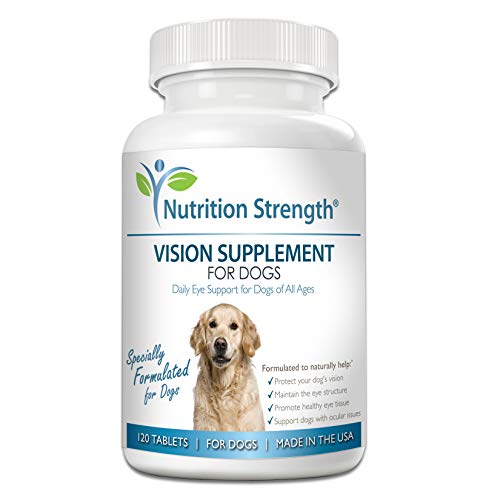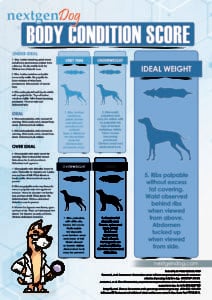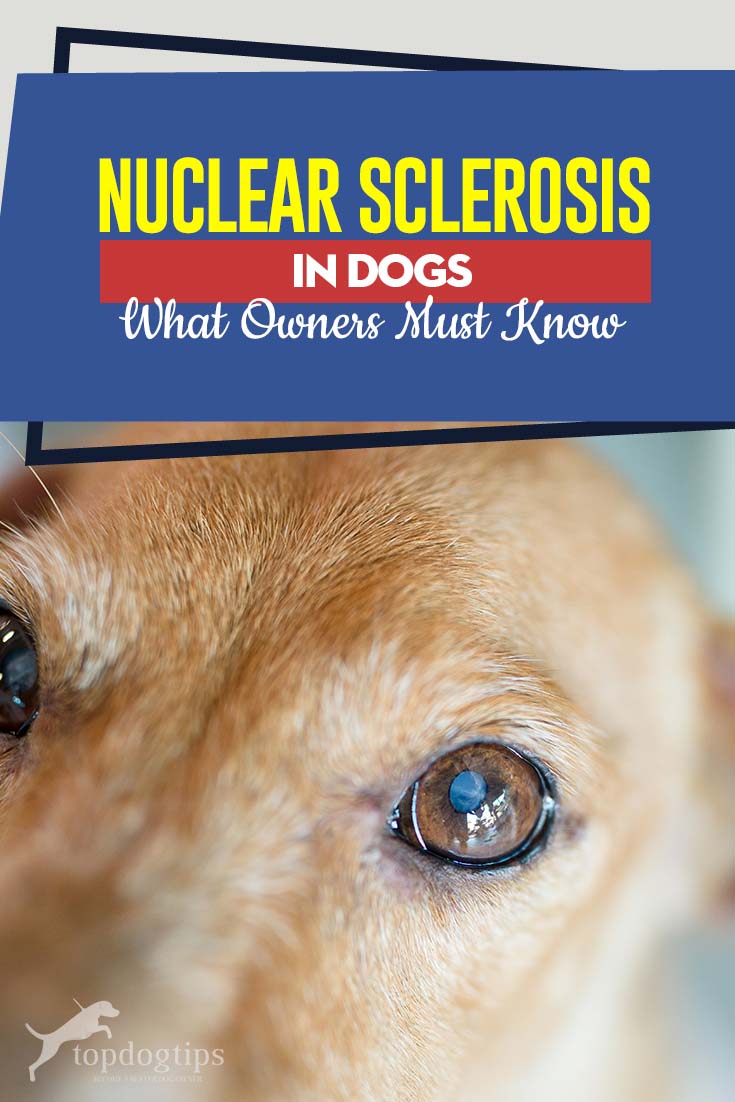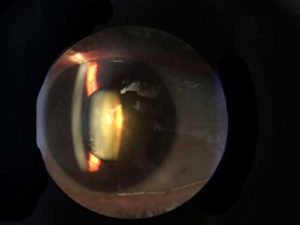When you observe change in your dog’s eyes that causes their pupils to look cloudy, hazy, and/or change the color, you may first think of cataracts and loss of eyesight. However, there's another eye disorder called nuclear sclerosis with similar symptoms that develops naturally in aging dogs, without the risk of losing eyesight.
What is Nuclear Sclerosis?
Nuclear sclerosis (also called lenticular sclerosis in the veterinary community) is the medical name for a translucent haze in the dog's eyes that is cloudy or bluish in color and develops in the optical lens of mostly senior dogs. This condition is usually only seen in dogs that are over the age of 6 and is especially common in dogs that are 8 or 9 years of age (Wei Wang, et al.).
What Causes Nuclear Sclerosis in Dogs?
Nuclear sclerosis is considered to be a normal change that occurs in dogs as they age.
There hasn’t been enough scientific research to determine exactly how nuclear sclerosis in dogs develops, but from the studies that have been completed, scientists conclude that the eye lens slowly becomes harder as a dog ages because lens fibers are produced throughout the dog’s lifetime, but the lens never grows any bigger (Silvan R. Urfer, et al). As your dog ages, the lens becomes constricted by all of the new lens fibers that are created but have nowhere to go. As a result, the lens hardens and becomes opaque.
Signs of Dog Nuclear Sclerosis
Nuclear sclerosis will be clearly visible to you because your dog’s eyes will begin to look abnormally cloudy and/or have a blue-tinted haze to them. This condition can be detected especially when the dog’s pupils are dilated, as it will present itself as gray cloudiness, or opacity in the center of the dog’s eyes (the lens).
Nuclear sclerosis in dogs most often occurs in both eyes at the same time and is often easier to see when looking at the dog’s eyes from the side, instead of from the front. This scientific paper (PDF) shows more cases of nuclear sclerosis in dogs and the differences between this condition and cataracts.
Is Nuclear Sclerosis the Same as Cataracts in Dogs?
![Dog Eye Infection - Prevention and Treatments [Infographic] Dog Eye Infection - Prevention and Treatments [Infographic]](https://topdogtips.org/wp-content/uploads/2018/02/Dog-Eye-Infection-109x1024.jpg) No. Nuclear sclerosis and cataracts are two different disorders, both of which are common in senior dogs. The difference between the two is that cataracts present themselves as a white or opaque change to the dog’s eyes, and significantly affect the ability of light to make its way through the dog’s retina, which greatly reduces a dog’s ability to see. Whereas nuclear sclerosis does not significantly impact a dog’s ability to see (Jerome Hernandez, et al).
No. Nuclear sclerosis and cataracts are two different disorders, both of which are common in senior dogs. The difference between the two is that cataracts present themselves as a white or opaque change to the dog’s eyes, and significantly affect the ability of light to make its way through the dog’s retina, which greatly reduces a dog’s ability to see. Whereas nuclear sclerosis does not significantly impact a dog’s ability to see (Jerome Hernandez, et al).
Although these two disorders are different, it can be the case that a senior dog develops cataracts after developing nuclear sclerosis. This does not mean that nuclear sclerosis causes cataracts because studies show that most dogs that get nuclear sclerosis do not develop cataracts. These conditions are both the most common eye disorders found in older dogs.
It was reported that nuclear sclerosis and/or cataracts are found in 50% of dogs over the age of 9, and in 100% of dogs over the age of 13, and nuclear sclerosis seems to be more prevalent than cataracts. A veterinarian ophthalmologist can perform an eye exam on your dog to determine which disorder, or if both, are present in your pooch.
Side Effects of Nuclear Sclerosis in Dogs
Thankfully, this condition is not painful for your dog. Other than the physical change in the appearance of the dog’s eyes, nuclear sclerosis doesn't present many known side effects. A dog’s vision is not negatively impacted to a noticeable degree with the development of this disorder; because nuclear sclerosis in dogs progresses gradually, your pet is able to adjust to any changes in vision that may occur.
RELATED: Eye Infections in Dogs – Prevention and Treatment [Infographic]
Treatment of Nuclear Sclerosis in Dogs
There is no specific course of treatment for nuclear sclerosis in dogs, nor is any treatment necessary. However, it's best for your dog to be monitored regularly by your vet (your regular vet check-ups), to check your pup for the development of cataracts. If cataracts do develop, surgery can be performed in order to correct the disorder, and the sooner the surgery is performed, the better the prognosis will be for the dog.
Natural Treatments and Preventatives for Dog's Eye Health
There are some things you can do to potentially help your dog's eyes or make your pet feel more comfortable. It's important to note that while some of these have been proven (David L. Williams et al.) to help dogs with nuclear sclerosis, cataracts, and other health issues, many other natural remedies haven't gone through rigorous scientific testing and haven't been proven their effectiveness, they're mostly are based on anecdotal evidence from other pet owners or holistic vets. So, before you attempt to use these natural treatments, discuss this with your vet.
Acupuncture
A well-trained, certified veterinary acupuncturist is able to place needles at a safe distance from the eye in ways that can support eye health and alleviate or eliminate disorders over time. This is because the eye has acupuncture points located all around it, and four key energy channels (called meridians) that can respond to gentle acupuncture stimulation, explains Dr. Cathy Alinovi, a nationally renowned veterinarian with a Master’s Degree from Perdue University and trained in a wide variety of holistic treatments for animals.
Antioxidants
A variety of foods and supplements can be given to a dog to potentially prevent or delay the onset of nuclear sclerosis, or to help treat the condition if the dog already has it, due to vision promoting and eye-health-benefiting ingredients that help to eliminate free-radicals.
Look for foods and supplements that contain the following antioxidants:
There are several commercially sold eye-enhancing supplements, the most popular being the one called Ocu-GLO which is recommended by many veterinary eye-care specialists to give to dogs because it contains 12 different, and natural pharmaceutical grade antioxidants that work together to support your dog’s eye health, including lutein, grapeseed oil, omega-3 fatty acids, and other antioxidants and vitamins that are essential to a dog’s eye health.
These are the four most popular eye health supplements for dogs you can try:
| Preview | Product | Rating | |
|---|---|---|---|

|
Ocu-GLO Vision Supplement for Medium to Large Dogs... | 2,661 Reviews | Check Price |

|
Zesty Paws Eye Supplement for Dogs - Vision... | 2,063 Reviews | Check Price |

|
Nutrition Strength Eye Care for Dogs Daily Vision... | 376 Reviews | Check Price |

|
Dog Eye and Vision Supplement - Omega 3 Fish Oil,... | 22 Reviews | Check Price |
Bilberry
This eye-health-enhancing berry can easily be added to a dog’s food in raw or pill form (and is included in some of the supplements mentioned above), and is an excellent source of flavonoids and other antioxidants. Studies of herbal medicine showed that natural compounds found in the bilberry called anthocyanosides, in addition to the other eye-health-promoting flavonoids found in these berries, can help improve capillary strength, and are especially attracted to the retina of the eye. When taken with vitamin E, bilberries have been shown to protect the eye’s tissues and prevent the lens of the eyes from becoming cloudy.
Boswellia
Multiple scientific studies have shown that resin that comes from the Boswellia tree can help to decrease or even eliminate inflammation in animals, which can directly contribute to a dog having healthier eyes.
Goji Berry
 This eye-health-promoting berry is a tasty treat that dogs often enjoy eating. Luckily, the delicious goji berry (also called the wolfberry because it comes from the Lycium plant) is known to help our canine companions with overall eye health, and raw, organic goji berry treats can be purchased online (with a single ingredient), or at a variety of health food stores.
This eye-health-promoting berry is a tasty treat that dogs often enjoy eating. Luckily, the delicious goji berry (also called the wolfberry because it comes from the Lycium plant) is known to help our canine companions with overall eye health, and raw, organic goji berry treats can be purchased online (with a single ingredient), or at a variety of health food stores.
Eyebright
This appropriately named plant produces a compound that is also known as Euphrasia. It has been used for centuries as a way to help bring relief to troubled eyes, as well as clear up eye infections and the resulting discharge. Eyebright is sold commercially in the form of eye drops. Consult with your veterinarian if you can use eyebright drops on your dog in order to help improve its ocular health.
Zinc & Vitamin C Eyedrops 
There are a variety of eye drops that have been specially formulated with vitamin C and Zinc in them to be used with dogs to help soothe and treat their irritated eyes. These products are readily available for purchase online (Dr. Goodpet, for example), or at many holistic health stores.
How to Delay Age-related Disorders in Dogs
Some holistic veterinarians recommend that dog owners follow the 7-step program detailed below to keep their dog in optimal health and free of dangerous toxins and free radicals, which may potentially delay, if not completely eliminate (claimed by some vets), the onset of age-related eye disorders such as nuclear sclerosis in dogs.
1. Add Bilberries and Vitamin E to Dog’s Food
As mentioned above, bilberries are an edible berry that has been shown to have antioxidants, and specialized flavonoids that are especially attracted to the eye and the retina, in particular, and have been proven to assist in, and even prevent eye disorders in dogs by improving capillary strength.
2. Add Other Beneficial Supplements to Dog’s Food
In addition to the above, talk to a holistic veterinarian about other supplements that a dog can have that will benefit the health of its eyes (some of those discussed above).
As mentioned, supplements to consider for your dog's ocular health include beta-carotene, glutathione, lutein, SOD (super oxide dismutase), astaxanthin, and alpha lipoic acid. There are also natural, food/plant-based eye-drops and Chinese herbs that have been claimed to be effective as an aid in delaying the degeneration of the lens of the dog's eyes – ask your holistic vet about these products.
3. Feed Dog a Premium Diet
Dogs should be fed a diet that is full of not only protein and healthy fats but also natural antioxidants, vitamins, minerals, and nutrients to support their overall health. A premium, optimum diet for a dog may consist of whole, fresh, filler-free (sometimes homemade) foods, instead of processed foods that are often low in vital nutrients, and contain fillers. Vitamin C, in particular, is known to destroy free radicals within a dog’s body, which can slow down the onset of age-related, degenerative disorders.
4. Green Environments for Dogs
Living in a green environment is best for a dog’s overall health. A green environment is one that is free of products that contain chemicals (some often found in households), and free of any other toxic household items, such as chemical-filled cleaners, detergents, shampoos, aerosol sprays, and foods.
5. Good Physical Conditioning
Your dog needs daily, semi-strenuous activity (depending on the breed and size of the dog) to stay in good physical and mental condition. Even as a dog ages, they still need to move its body. Consider letting a dog swim in a pool, or in any safe body of water for low-impact physical conditioning as they age, and need to put less pressure on their joints.
6. Healthy Weight Maintenance
 Obesity in dogs is a common and dangerous problem that causes many health issues that will diminish a dog’s quality of life, and even cause early death. Any extra weight that a dog carries around puts a massive amount of pressure and strain on all of their organs, as well as their joints and ligaments, subsequently affecting other areas such as the dog's eyes.
Obesity in dogs is a common and dangerous problem that causes many health issues that will diminish a dog’s quality of life, and even cause early death. Any extra weight that a dog carries around puts a massive amount of pressure and strain on all of their organs, as well as their joints and ligaments, subsequently affecting other areas such as the dog's eyes.
Feeding your dog a healthy and balanced diet, on a strict feeding schedule, with specific amounts of food and calorie amount given at each feeding based upon feeding recommendations for the dog’s weight will help to prevent obesity. If your dog is overweight, see a veterinarian, they can prescribe special food and diets that are formulated to help a dog lose weight.
7. Use Only Essential Vaccines and Medications
Do not allow your dog to get over-vaccinated (use only core vaccines and those your veterinarian considers essential based on your dog's breed, age, health history, etc.) or receive unnecessary medications, such as medications that are meant to deter bugs but are laden with other dangerous and toxic chemicals. In some cases, an all-natural and chemical-free option can be just as effective and less toxic/dangerous to your pup.
READ NEXT: 9 Most Common Dog Eye Problems (How to Prevent and Treat Them)
Disclosure: We may earn affiliate commissions at no cost to you from the links on this page. This did not affect our assessment of products. Read more here and find full disclosure here.















